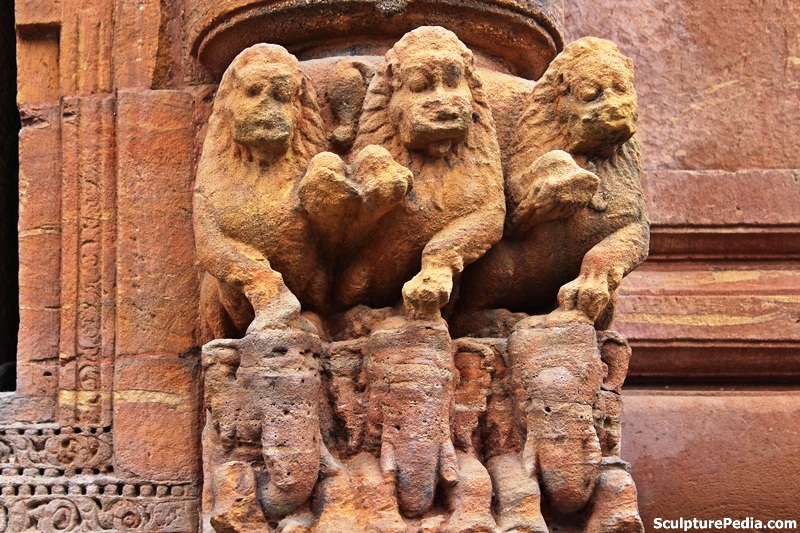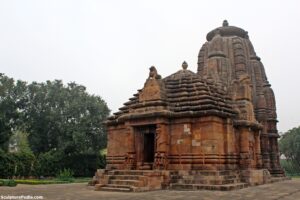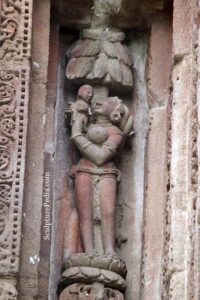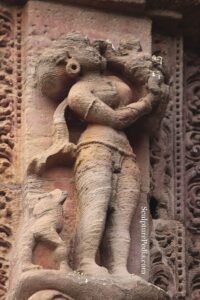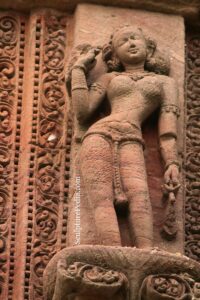Gaja Simha is a common attribute of Kalinga style temples or temples in Odisha. Gaja means an elephant and Simha means a lion.
At the Rajarani Temple, jagamohana (the place from where pilgrims view the sanctum) of Rajarani Temple is flanked on either side by a large Naga-Nagin (male & female snacks) stambhas (columns). The base of the stambha (pillar) are decorated with a triple Gaja Simha motifs.
In the motif, we can see that three lions are riding on top of mighty elephants.
In similar sculptures at Konark Sun Temple, we can see Gaja Simha Nara combination where elephant is on the top of Nara (man) and Lion is on top of an elphant.
Rajarani temple dates back to 1100th Century CE and is a best example of Kalinga Architecture (Kalinga Panchratha Style). It is built in a Rekha Deul format.

